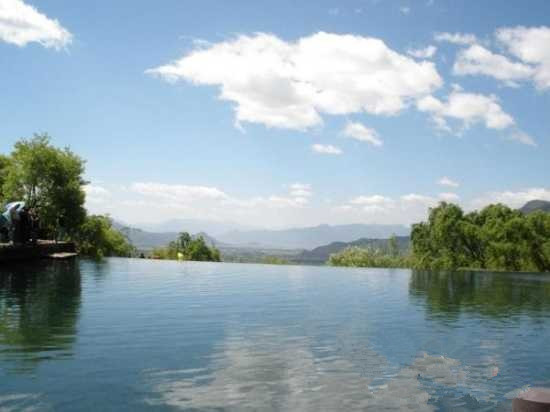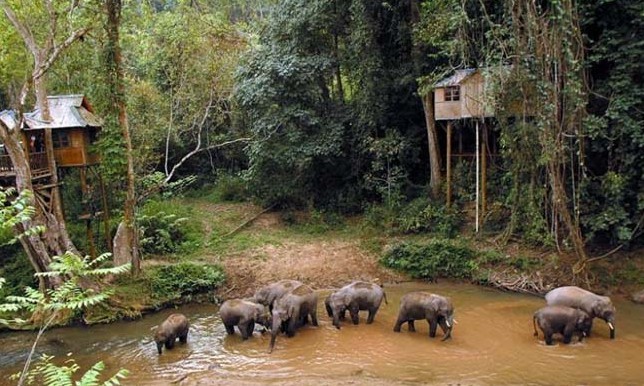
Covering 1.5 million hectares, the Sanchahe Nature Reserve is dived into two parts, which are connected by a long cable car. Riding the aerial cable car is a fun and exciting way to see the nature reserve.

The staff at the Sanchahe Nature Reserve also organize a number of interesting guided tours designed to show visitors the highlights of the area. These tours include a trip to the nearby Aini village, Dai village, traditional Bulang village and tea plantations. In order to get the most from the nature reserve, guests can hire a guide to take them on a trek. Most treks last for five or six hours and allow visitors an insider's view of the area.Those with money to spare can rent a bungalow in the treetops. This is the perfect place to spy on the nocturnal elephants that live in the Sanchahe Nature Reserve and also watch the sun set and rise through the trees.

Xishuangbanna rain forest and monsoon jungle provide a habitat for 359 species of terrestrial vertebrates, 118 species of amphibiants, 439 species of birds accounting for two thirds of the total number in China and more than 60 species of snakes.Among animals for world protection are elephant, white-breast and black wood-peckers, leopards and Bengalese tigers. Thirteen species of wild life enjoy state protection including loris, gibbons, red-necked cranes, brown-necked hornbills and green peacocks. To the Dai people, the green peacock is a symbol of peace, happiness and good fortune. It is seldom seen in China that there are so many species of rare and valuable wild life living together in Xishuangbanna. Today, we may see some of the animals or birds in the Nature Reserve.
In the Nature Reserve there is a castle-like observing house by the water pool is specially built for tourists. On the trees by the pool are some small and exquisite "Observing Elephant Platforms" on which people can observe elephants or other animals drinking water. If you stay here for two or three days, you are sure to see wild elephants right before your own eyes The elephants usually drink water in the morning and in the evening. When you observe them, you must keep quiet and do nothing to irritate them. Otherwise you will regret it later.
The elephants in Xishuangbanna are Asian elephants. They live on wild banana, thorn bamboo top, tender branch and leaf , bamboo leaf and corn. After eating the food, they usually go to a pool surrounded with trees to drink water which is contained with nitre and alkali, and take a mud-bath. There are about 300 elephant living in the dense forest in Xishuangbanna, so it is called "the Kingdom of Elephants". To the Dai people, the elephant is a symbol of good fortune, might, strength and force.
Travel Note:
Many foreigner go to San Cha He Nature Reserve to see the wild elephants. But it is not safe to explore in the forest by
yourself, especialy in the raining season, beacause the wild elephants are not freindly to any people, elephants walking around in the forest very frequently in raining season.So far, many elephants attacting people case alread happened in the forest before.
So, the better way to see the wild elephant is to stay on tree guesthouse for overnight. Normaly the wild elephants will go to the pool beside the guesthouse for water and bath, at evening, night or morning.
Travel to Sanchahe Nature Reserve - Getting There
Access is from Jinghong, where there is a large international airport. From the province capital, the journey can be completed by bus (40 minutes). Jinghong airport is connected to most of China's major airports as well as international destinations such as Bangkok and Chiang Mai.
Admission Fee:¥0

You will only receive emails that you permitted upon submission and your email address will never be shared with any third parties without your express permission.
